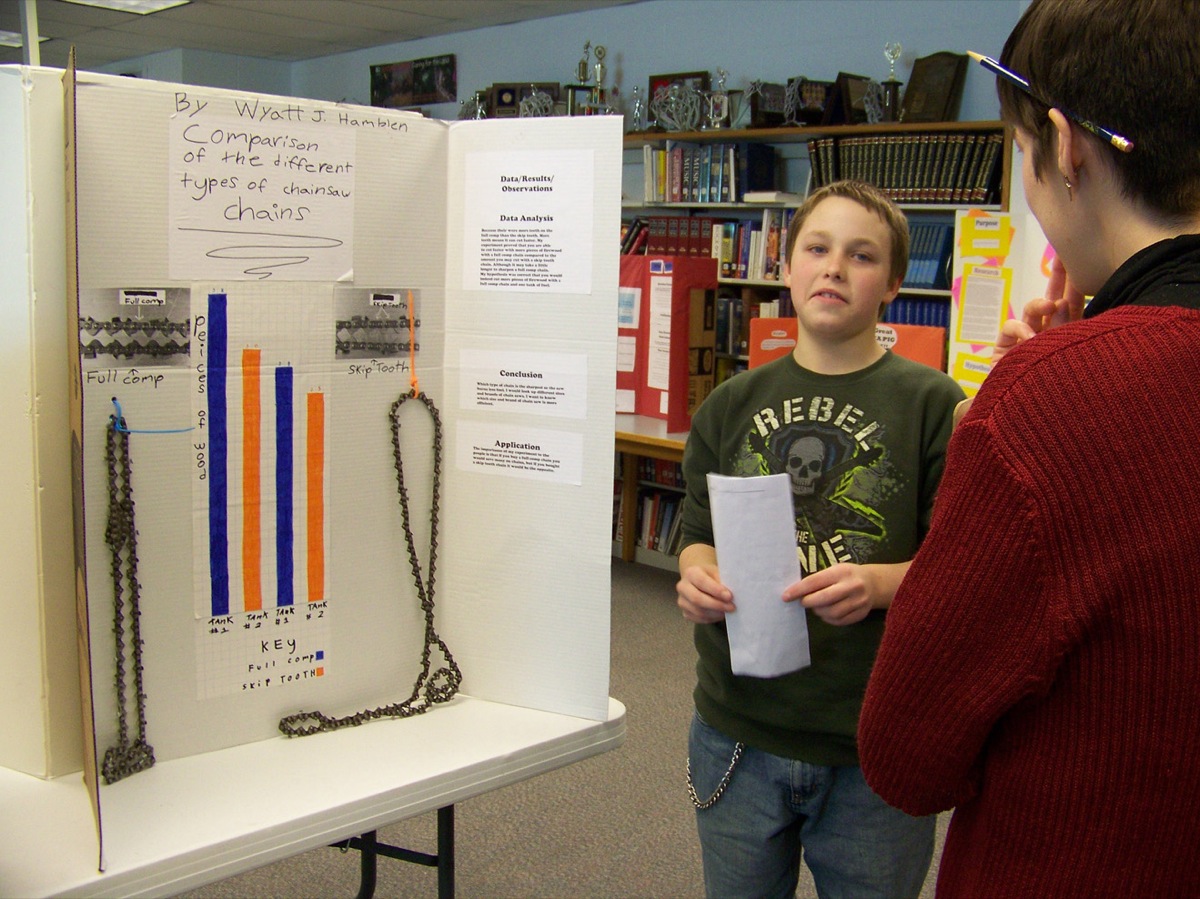When it came to choosing a science fair project, Ninilchik School student Wyatt Hamblen picked a subject that would help his family: which type of chain saw blade would cut the most wood. Installing a “full comp” chain, a chain with one space between each cutting tooth, Wyatt cut wood until he ran out of gas. Then he switched to a “skip tooth” chain, one with more space between the teeth, and repeated the process.
To see if he got the same results,Wyatt did it again. Wyatt’s effort paid off.
“My hypothesis was correct, that you would indeed cut more pieces of firewood with a full comp chain and one tank of fuel,” said Wyatt, whose family heats their home with wood. For science fair judges unfamiliar with chainsaw blades, he included one of each type of blade in his presentation.
His brother, Warren Hamblen, doubled the value of the science fair by testing which type of wood burns longer: split spruce, spruce rounds, split birch or birch rounds. What he discovered is that spruce rounds burn hottest, but birch rounds burn longest.
Personal meaning was the theme of the day at the March 5 event.
Caitlin Painter tested detergents, wanting to find the most economic product to remove stains. Ethan Gavalis looked for a way to purify water. Ryan Hanson used consumer science to ensure his family was buying strong toilet tissue. Kate Munzulla tested three lures on two lakes to find the most effective method for ice fishing.
“My purpose was that I know Alaskan people have (a) problem catching fish, so I now have a solution for Alaskan people,” she said of her conclusion that using shrimp was the secret to success. Photos of a day’s catch proved her point.
Having a family member injured by falling on ice inspired Gabriel Miller to look for a way to keep that from happening again. Gabriel tested which would melt ice faster: rock salt of kitty litter. The conclusion: rock salt.
Six judges — two former Ninilchik teachers, a Ninilchik tutor, a Project GRAD representative, a state park ranger and a former Ninilchik student — listened to more than 60 presentations by the second- through eighth-grade students, asked questions and observed reenactments of experiments.
Some students, such as Wyatt, proved their hypotheses. Others, like Jade Robuck, were surprised by the outcome. Jane was looking for a drink people could enjoy “that doesn’t have a lot of sugar so they don’t have cavities.” She enlisted the help of friends to taste-test fruit juice, carbonated beverages and sports drinks. The conclusion: apple juice had the most sugar.
Trying to get an edge in his studies, Robert McGinnis tested his hypothesis that, with the help of an e-reader, he could learn Spanish while sleeping. Robert’s research was conducted over a five-night period. A table on Robert’s presentation board indicated the total number of words he learned: 0.
Science fair results:
Grades 2-4
First place:
Wyatt Hamblen, comparison between types of chain saw chains
Second place:
Jade Robuck, which drink
has the most sugar
Third place:
Rachel Okonek, which paper towel brand is strongest
when wet
Grades 5-6
First place:
Ethan Gavalis, making
water potable
Second place:
Caitlin Painter, Tide vs. Xtra vs. water
Third place:
John Mumey, .30-30 penetration
Grades 7-8
First place:
Matt Bartolowits, all aboard
Second place:
Mikayla Clark, how cold affects battery life
Third place:
Heather Bear, snow lab


